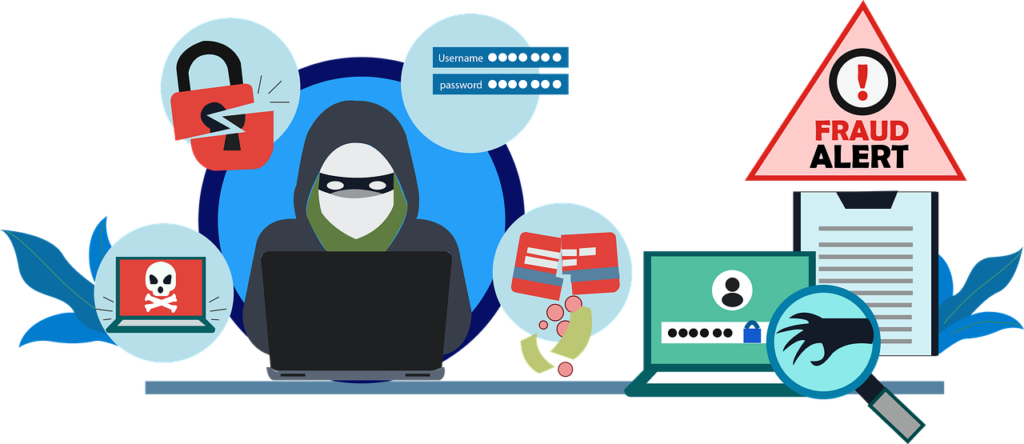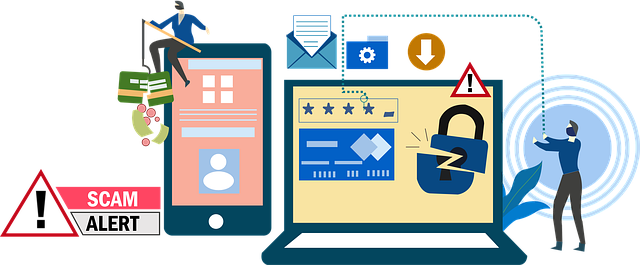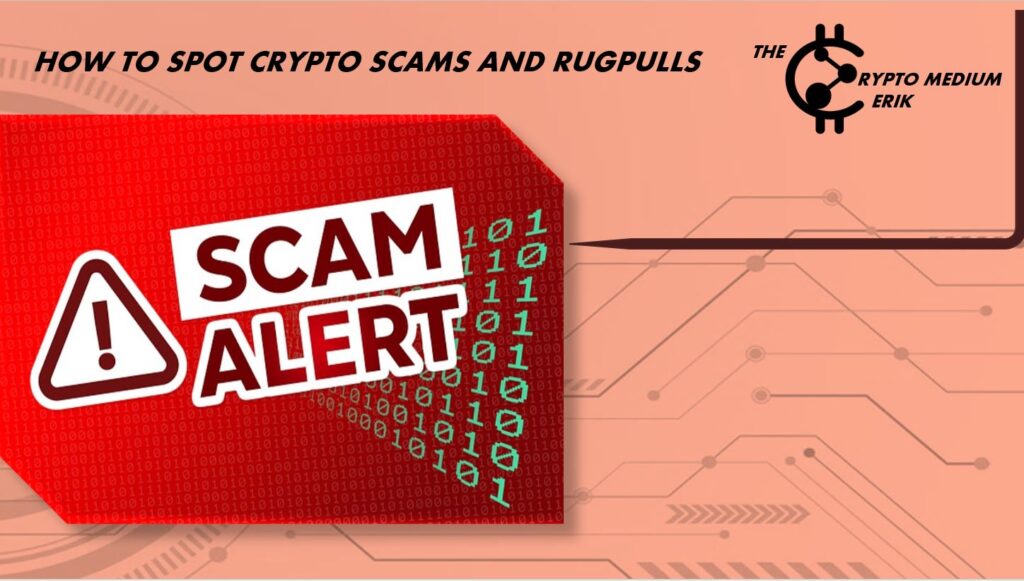
- GREETINGS DENIZENS!
- How do we Spot Crypto Scams and Rugpulls?
- The main Crypto Scams and Rugpulls;
- Thr feATURED SCAM IN THIS ARTICLE IS THE DUSTING ATTACK- BY TITANO FINANCE
- Is a surprise bankruptcy or project fail a scam?
- DOES THIS SOUND FAMILIAR?
- Here's 11 tips on how you can spot scams and rugpulls before it's too late:
- 11-Pump and dump scheme
- So, how can you avoid getting scammed?
- Here are a few tips:
- Final thoughts;
- resources
- **DISCLAIMER**
GREETINGS DENIZENS!
- GREETINGS DENIZENS!
- How do we Spot Crypto Scams and Rugpulls?
- The main Crypto Scams and Rugpulls;
- Thr feATURED SCAM IN THIS ARTICLE IS THE DUSTING ATTACK- BY TITANO FINANCE
- Is a surprise bankruptcy or project fail a scam?
- DOES THIS SOUND FAMILIAR?
- Here's 11 tips on how you can spot scams and rugpulls before it's too late:
- 11-Pump and dump scheme
- So, how can you avoid getting scammed?
- Here are a few tips:
- Final thoughts;
- resources
- **DISCLAIMER**
How do we Spot Crypto Scams and Rugpulls?
Before we get inot the 11 tips on how to spot this activity; Its so important to emphasize that the non-bitcoin crypto and decentralized finance (Defi) space is filled with undoxxed, anonymous project leads, hiding behind pictures of cartoon characters, using fake names and VPNs, web hosting on shady Dapps, and interfacing with smart contract platforms that anyone with simple tech knowhow and a couple of dollars in gas fees can deploy. You tell me if this sets up the conditions for a scam.
“The non-bitcoin crypto and decentralized finance (Defi) space is filled with undoxxed, anonymous project leads, hiding behind pictures of cartoon characters, using fake names and VPNs, web hosting on shady Dapps, and interfacing with smart contract platforms that anyone with simple tech knowhow and a couple of dollars in gas fees can deploy. You tell me if this sets up the conditions for a scam.“
– Me-The Crypto Medium, Erik
The main Crypto Scams and Rugpulls;
*Dusting Attacks
*Suspiciously high yields
*Stealth minting
*Unknown or anonymous developers
*High APY
*Poor Effort or lack of development
*Smooth Operators
*No external audit
Thr feATURED SCAM IN THIS ARTICLE IS THE DUSTING ATTACK- BY TITANO FINANCE
What is a Scam?
A scam is an attempt to defraud a person or group by deception. Scams are often designed to exploit human greed, vanity, or desperation, and generally involve some type of bait (e.g. an offer of easy money) that the victim finds hard to resist.
What is a Rugpull?
A rug pull is a specific type of crypto scam in which the developers behind a project suddenly disappear, taking all the funds raised with them. Rugpulls often occur early on in a project’s life cycle, before it has had time to build up any real community or momentum.
Scam vs Rugpull:
The key difference between a scam and a rug pull is that in a rug pull there is usually no deception involved Initially. The developers simply walk away with the funds, often leaving the project’s investors high and dry.
Is a surprise bankruptcy or project fail a scam?
No. You have to recognize that the risk is very high in all non-Bitcoin-related crypto. This space is filled with innovative people with great ideas who have absolutely no clue to realize their idea or run teams and companies.
This is why 95% of all businesses and projects fail.
While these types events are often shouded in secrecy obscurity and confusion thry are often considered unethical, immoral, and criminal.
But a bankruptcy or project termination out of seeminly nowhere is not necessarily a scam.
It could be that well-intended actors simply misjudge the market or who are incapable of managing a company, simply run into financial difficulties.
They do often become bad actors, as in Dan Schatt and Alex Mashinsky‘s case, by concealing the truth from customers and attempting to cover up evidence.
So....Have I been Scammed? Of COurse! I learned how to spot Crypto Scams and Rugpulls the hard way.

DOES THIS SOUND FAMILIAR?
You thought you were a smart investor. You read all the articles, you followed all the tips, and you even went to a few meetups. And now, here you are, with nothing to show for it but a Mars real estate-backed cryptocurrency that’s tanked in value. You had such high hopes for this investment, and now you’re left wondering what you could have done differently.
Then you see it, another amazing opportunity. So you take the loss and cash out on your beachfront NFT property on Mars and flip all your remaining money in a new crypto coin that’s backed by a live volcano in El Salvador.
You’re convinced this is the next big thing, and you’re going to get rich quickly. But then, out of nowhere, the volcano explodes, and the dev team have deleted their discord chat. Your coin becomes worthless….agian. You’ve been rug pulled!
If only you’d known how to spot a crypto rug pull before investing! Maybe then you could have avoided losing your hard-earned money.
But hindsight is always 20/20, and now it’s too late. At least you can take comfort in the knowledge that you’re not alone; many other investors have fallen prey to scams. Sadley, they’re so common, it almost become a “right of passage”.
Here's 11 tips on how you can spot scams and rugpulls before it's too late:

1-A Dusting attack
is a new type of crypto scam that’s been making the rounds lately. They are a type of malicious activity in which bad actors send very small amounts of cryptocurrency to victims’ wallets that they didn’t ask for or purchase. To demonetize victims, the victims need to attempt to sell these tokens.
This scam involves creating small amounts of a cryptocurrency, and then “dust” them onto addresses belonging to unsuspecting victims. Once the dust has settled, the attacker then uses these tiny holdings to track the victim’s activities and even deanonymize them.
2-Promises of astronomical returns?
Suspicious. If an investment sounds too good to be true, it probably is. This old adage applies to the world of cryptocurrency. If a project is promising returns that are much higher than what’s considered normal, be very wary.
Do your research and make sure that the project is legitimate before investing any of your hard-earned money If an investment opportunity promises to make you rich quickly, it’s probably too good to be true.
Be especially wary of opportunities that guarantee returns, regardless of market conditions.
3-Lack of transparency
Suspicious. When it comes to your money, you have a right to know where it’s going and how it’s being used. If a project is vague about how they plan to use your investment, or if they’re not forthcoming about their team or roadmap, that’s a major red flag. Any reputable project should have no problem.
A legitimate project should have a clear roadmap and whitepaper outlining the team’s plans and objectives. If there is no information available about the team or the project, it’s best to steer clear.
4-Stealth minting.
Suspicious. One of the most popular crypto scams right now is “stealth minting.” This occurs when a project secretly mints new tokens and then sells them off-exchange, without disclosing this information to investors.
This can artificially inflate the price of the token, and when the news finally comes out, the price takes a nosedive. This type of scam is especially prevalent in the DeFi space, so be extra cautious when investing in these types of projects.
These are just a few of the many red flags to watch out for when evaluating an investment opportunity. By being aware of these scams, you can protect yourself and your hard-earned money.
5-Anonymous team?
Suspicious. A legitimate project should have nothing to hide. If the team is anonymous or refuses to disclose information about themselves, that’s a major red flag.
Be sure to do your research and only invest in projects where you feel comfortable with the team.
If the team behind a project is anonymous, it’s harder to hold them accountable if something goes wrong. Look for projects with a transparent and public team.
No product or prototype?
Suspicious. A project that doesn’t have a product or prototype is more likely to be a scam.
If the team can’t show you what they’re working on, it’s best to steer clear. Even if the project does have a product, be sure to do your research and make sure it’s legitimate before investing any money.
6-Social media frenzy
Suspicious. Just because a project is getting a lot of social media buzz doesn’t mean it’s legitimate. In fact, many scammers use social media to pump up the price of their tokens before dumping them on unsuspecting investors.
These projects generate a lot of hype on social media but have little to no activity on legitimate crypto forums and discussion groups. These projects may be using paid shills to generate fake buzz.
Be sure to do your own research before investing in any project, regardless of how much hype surrounds it
7-Insufficient liquidity.?
Suspicious. If a project is not listed on major exchanges and doesn’t have enough liquidity, it may be a rug pull.
Many scammers will create their own exchanges to trade the token, which can be easily manipulated.
Be sure to check the liquidity of a token before investing, and only invest in tokens that are traded on major exchanges.
If a project doesn’t have enough liquidity, you may not be able to cash out your investment when you want to. This can lead to big losses if the project turns out to be a rug pull.
8-High APY?
Suspicious. Be very wary of any project promising high returns. Many scammers use high APYs to lure investors into their trap. Be especially careful of projects promising guaranteed returns, as these are often scams. Do your own research and only invest in projects you understand.
Note
High APY projects are all Ponzi schemes but is this common knowledge and well accepted as fundraising tactics for legitimate projects within the defi community? These projects become scams when the teams are deceptive about their intent.
9-Smooth Operators
Suspicious. The crypto world is full of scammers and rug pullers. They’re often very charismatic, smooth talkers who can be very convincing.
If someone is trying to get you to invest in a project without being able to simply answer your questions or they avoid discussing risk, be very wary. Don’t let anyone pressure you into investing in a project you’re not comfortable with.
10-Poor Effort or lack of development
Suspicious. If a project doesn’t have a working product or prototype, or if the team seems to be inactive, that’s a red flag.
Many scammers create fake projects to raise money and then disappear with the funds. Be sure to do your research and only invest in projects you believe are legitimate.
A project that doesn’t have a working product or prototype is more likely to be a scam. Even if the project does have a prototype, be sure to do your own due diligence to ensure it works as advertised.
11-Pump and dump scheme
Suspicious. Connected to the media frenzy tactic, a project that may be a pump and dump scheme if it has a lot of social media buzz but little activity from the developers, on legitimate crypto forums and discussion groups.
These projects may be using paid shills to generate fake buzz. Be sure to do your own research before investing in any of these.
So, how can you avoid getting scammed?

Well, there are a few things you can do to protect yourself.
First of all, don’t invest in projects that don’t have a working product or a solid team behind them. Secondly, always do your research before investing in any project. And finally, never invest more than you can afford to lose.
Here are a few tips:
*Be suspicious of suspiciously high yields
*Watch out for stealth minting schemes
*Check the identities of the developers behind a project
*Make sure there’s been some effort put into development, and that it’s not all hype
*Look for externally audited projects
*Never interact with coins that just appear in your wallet, just hide them.
In the world of crypto, there are three types of scams: the pump and dump, the Ponzi scheme, and the rug pull.
Well, one clue is if the developers are anonymous or unknown. If they’re hiding their identities, it’s probably because they have something to hide. Additionally, if the liquidity is locked up and there are limits on sell orders, that’s another red flag. It means that there isn’t enough demand for the token, which means that it’s not likely to be worth anything in the future.
Another thing to look out for is skyrocketing price movements. If the value of the token is going up rapidly, that could be a sign that it’s being artificially inflated. And finally, beware of suspiciously high yields. If someone is promising returns that seem too good to be true, they probably are.

Final thoughts;
Cryptocurrencies offer a new way of investing and with that, comes a new way of being rugged. While there are many legitimate ways to invest in cryptocurrencies, there are also many scams.
To avoid being robbed, it is important to do your due diligence and be aware of the different methods that thieves and bad actors use.
Just like with anything else in life, when it comes to investing in cryptocurrencies, it’s important to do your research. Make sure to read up on the project, team, and advisors, and verify that the wallets are locked.
And most importantly, don’t invest more than you can afford to lose. Because as we’ve seen, crypto is still relatively new and uncharted territory, and there are no guarantees when it comes to investing. So always be vigilant, and stay safe!
**DISCLAIMER**
I’m not a special advisor and this is not special advice
So if you’re looking for a special advisor, I will certainly not suffice
Merely a humble truth seeker; for a truth that nobody owns
Not your’s, mine, or their truth, but a truth that has no clones
In a world that’s unsettling and hazy, where the outcome is not very clear.
By stcking your Bitcoin and chilling, there’s much less that you have to fear.


